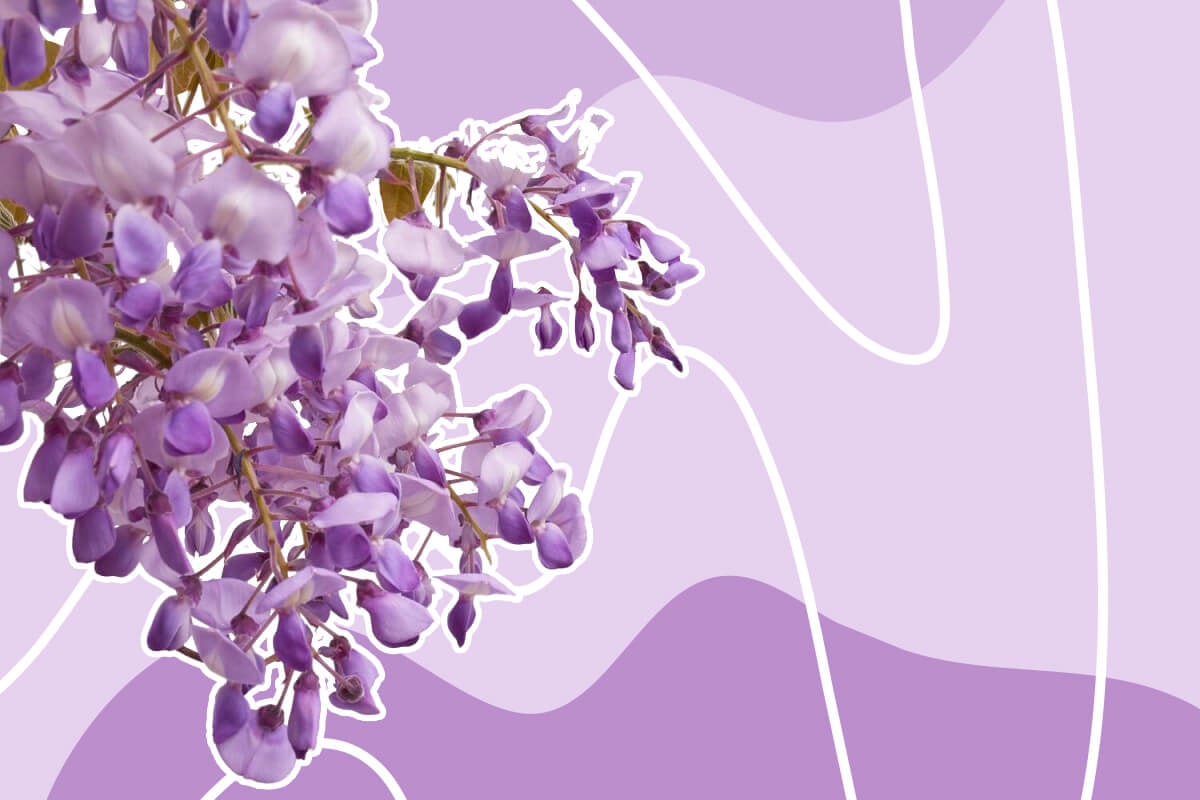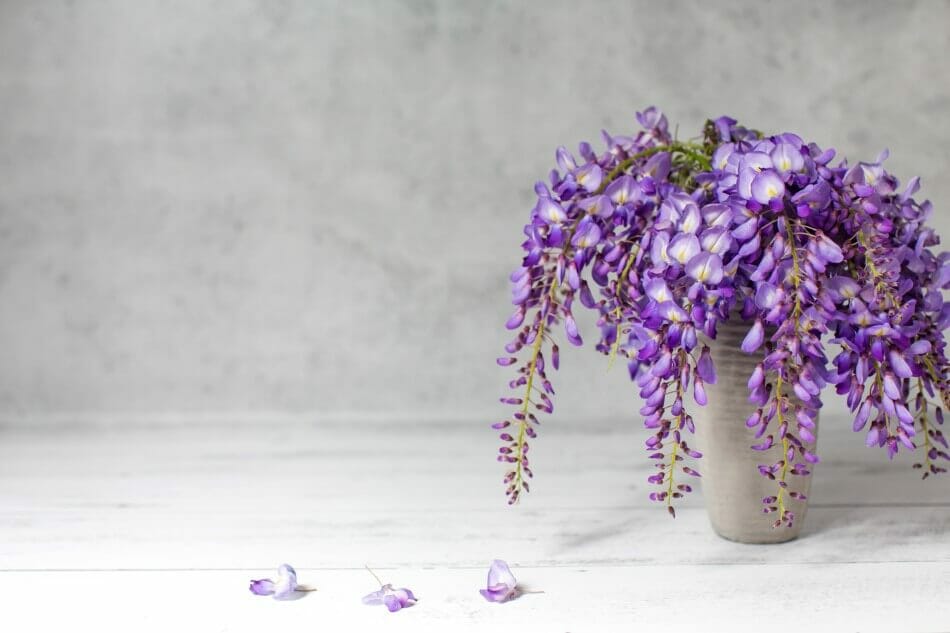Wisteria Flower Myths and Contemporary Meanings
Loved by some and disliked by others, Wisteria is a complicated plant that features bountiful purple blooms in eye-catching cascades. Wisteria may be controversial to grow in some parts of the world, but it is full of meaning that can be appreciated even without planting it. Here, we’ll take you through everything you need to know about Wisteria flower meaning and symbolism.

Key Takeaways
Wisterias symbolize romance in most cultures where the plants are native. In Korea in particular, the Wister flower carries the meaning of devotion that transcends death. The Japanese also consider Wisteria a symbol of good luck, success, and longevity.
Etymological Meaning
Wisteria is both the common and scientific name for the plant. Multiple sources claim that the plant’s name was given in honor of Caspar Wistar, an American physician. However, stories differ based on which botanist was believed to create the name in his honor. Thomas Nutall, one of the botanists believed to have named the plant, also wrote that he enjoyed the pleasing sound of the name.
Common Wisteria Flower Colors
Wisteria comes in various colors mainly due to careful breeding over the centuries. The individual color meanings for this flower include:
- White: Healing, purity, health, youth, rebirth, and mourning.
- Mauve: Passion, hidden beauty, intellect and wit, and devotion.
- Pink: Playfulness, platonic love, developing romance, and joy.
- Lavender: Delicateness, refinement, grace, wealth, and royalty.
- Sky Blue: Inspiration, wealth, intelligence, growth, development, and ambition.
Japanese Folklore and Myth

Wisteria has a specific and unique meaning in each area where it’s native. Each culture developed its myths about the flower, but since it didn’t travel until the 1800s, it doesn’t figure as much into the folklore of the cultures where it was introduced.
In Japan, the Wisteria vine is primarily a symbol of longevity. There are plants in Japan recorded to have reached an age of 144 years or more. Wisteria can also symbolize both intelligence and good luck in Japan as well.
Flowers from the Wisteria plant are commonly given as gifts to travelers and newlyweds to wish them well in new endeavors or travels. As in Europe, purple flower symbolism was a color restricted to higher-ranked members of Japanese society. This association with wealth and royalty continues to make it an indicator of good breeding today. It continues to feature on the family crests of many Japanese families.
Chinese Symbol of Luck
Chinese culture also holds the Wisteria blossom as a symbol of good luck and success. However, it also holds a strong romantic connotation in this culture.
In Feng Shui, its drooping habit is considered to represent humility and kneeling before someone else to honor them. This can indicate humbling yourself before a romantic partner or love interest in order to express your emotions for them. It is a common flower used for weddings and other romantic occasions.
Korean Folklore for Wisteria

In Korea, Wisteria took on the most romantic meaning of all. It directly developed a myth that involved twin sisters who were both in love with the same man. They decided to drown themselves since they couldn’t settle their argument over who should get to marry him. They were reunited in death and transformed into the Wisteria vine. One sister became the grasping and twisting stem, while the other became the delicate leaves and flowers of the plant. The man that they loved also threw himself into the pond and became a nettle tree, which the Wisteria vine tends to grow on in Korea.
Victorian Language of Flowers
Since Wisteria did spread into Europe and rapidly gain popularity during the Victorian era, it earned a place in the historic Language of Flowers.
As in other cultures, Wisteria vines earned a reputation for their clinging growth pattern. Victorians would include a cluster of delicate purple blossoms in their bouquets when they wanted to send a message of overwhelming desire and passion.
In particular, the Wisteria was considered to say “I cling to you” as it would cling to the branches of other trees. While Wisteria was not always available and required special care to cultivate in Victorian England, it was considered worth the effort for the elite who wanted to make a strong statement with an unusual imported flower.
Suitable Gifting Occasions

Wisteria sends such a strong message of romance in most cultures that they’re usually best used for declarations of devotion or for wedding arrangements. They are graceful enough to add an elegant touch to wedding decorations in particular.
If you want to give a live Wisteria vine as a gift to indicate how your devotion will grow over time, make sure it’s a variety that can stay potted or won’t be invasive in your area.
Wrap Up
Wisteria is graceful, beautiful, and has a truly romantic meaning. Consider growing as an arbor for taking photos with a loved one or for making romantic declarations under.
Thanks to its longevity, a well-contained Wisteria vine can produce flowers for hundreds of spring seasons to come. With varieties native to both Asia and North America, it’s possible to find a vine that isn’t invasive no matter where you live.
If you don’t want to worry about the vine spreading, just admire the beautiful cascading flowers as cut blossoms in bouquets.
Andrew is the Editorial Director at Petal Republic. He holds a BSc degree in Plant Sciences and has trained professionally at leading floristry schools in London and Paris. In amongst overseeing a global editorial team, Andrew's a passionate content creator around all things flowers, floral design, gardening, and houseplants.
